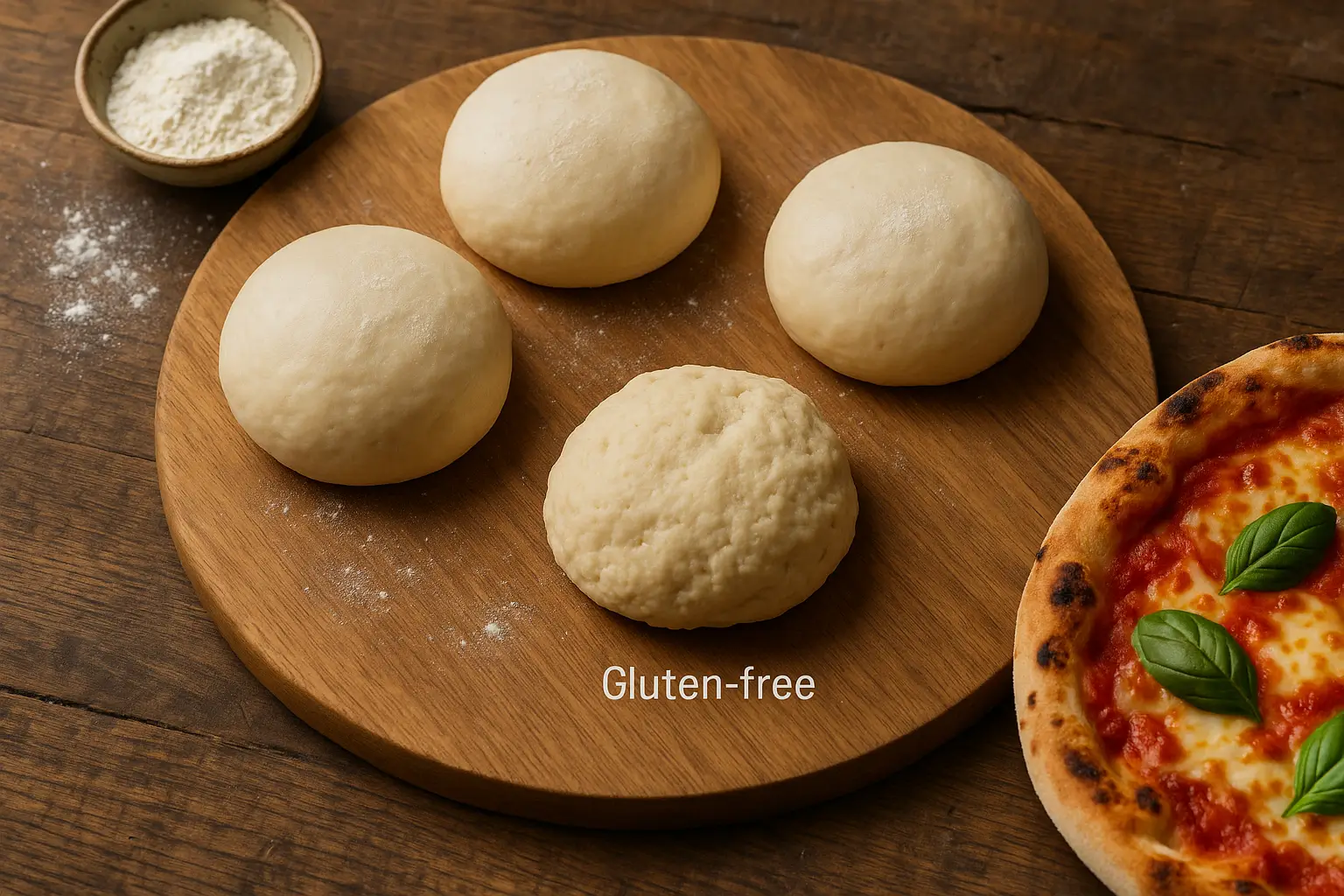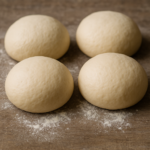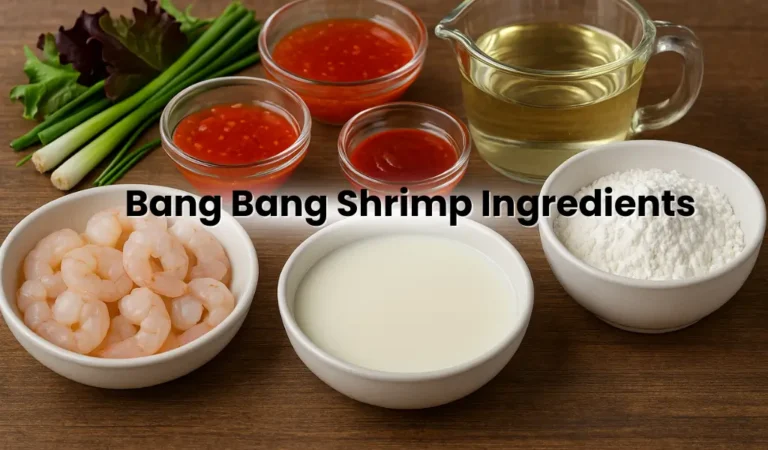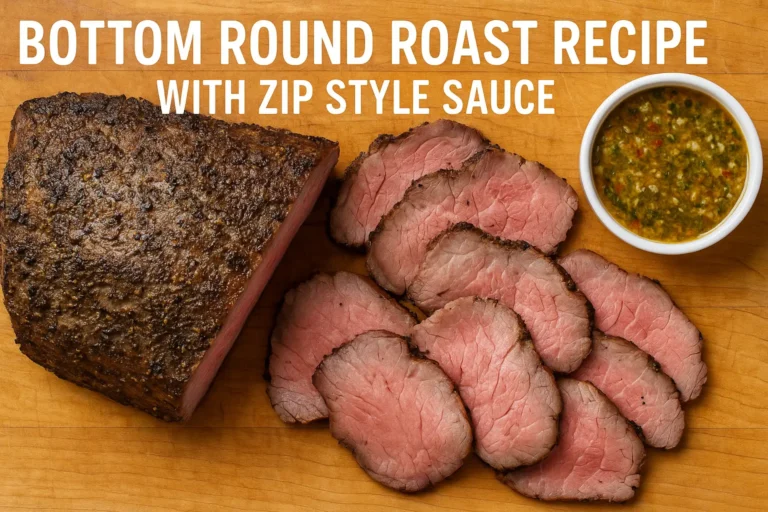Ooni Pizza Dough Recipe (Including Gluten-Free Option)

Ooni pizza dough should be light, chewy, and crisp to match the intense heat of the Ooni oven. This guide explains how to make the dough work perfectly inside a high-temperature oven, including a gluten-free version for those avoiding wheat. The focus is on technique, texture, and results, not just ingredients.
Ooni ovens reach temperatures close to 950 degrees Fahrenheit. That means the dough must cook fast without burning or drying out. A good dough should have balanced hydration, proper fermentation, and the right stretch to create a crisp crust with airy bubbles. Gluten-based dough develops this structure naturally, while gluten-free dough needs extra support from binding agents like psyllium husk or tapioca starch.
Why Ooni Dough Needs a Special Approach
Ooni ovens cook pizza in under 90 seconds. That speed demands a dough with high heat tolerance, strong structure, and balanced moisture. Store-bought dough often burns or dries out because it isn’t designed for such intense cooking. The right dough rises quickly, holds air, and forms charred spots without losing softness inside.
Classic pizza ovens work slowly. Ooni cooks fast. That changes everything about how the dough should behave. Strong gluten development allows the crust to stretch without tearing. It also supports the light, airy texture that makes Neapolitan-style pizza stand out.
For gluten-free dough, structure comes from careful combinations of flours and natural binders. Without these, the dough breaks apart or becomes rubbery. A good gluten-free base mimics the chewiness of wheat dough while staying light and crisp.
Key Features of a Good Ooni Pizza Dough
High Hydration for Fast Puffing
To work in an Ooni, dough needs more water than regular recipes. High hydration lets the dough expand quickly under heat, forming bubbles and a soft crumb. Dough with low water content turns stiff and doesn’t puff.
Long Fermentation for Better Flavor
Fermenting dough for at least 24 hours improves flavor and texture. Slow cold fermentation breaks down sugars and gluten naturally. This also helps with digestion and crust browning.
Elasticity to Withstand High Heat
Dough should stretch easily without tearing. This elasticity comes from well-developed gluten or, in gluten-free dough, from added binders. If the dough tears when shaping, it wasn’t kneaded or rested enough.
Ooni Pizza Dough Recipe
Equipment
- Mixing bowl
- Spatula or bench scraper
- Kitchen scale (optional)
- Towel for covering
Ingredients
- 300 grams of warm water
- 10 grams of salt
- 7 grams of active dry yeast
- 500 grams of double O flour (or bread flour/all-purpose flour)
Instructions
- In a mixing bowl, combine 300 grams of warm water and 10 grams of salt. Stir to dissolve the salt.
- Add 7 grams of active dry yeast to the mixture and stir gently to combine.
- Gradually add 500 grams of double O flour to the mixture.
- Mix the ingredients together using a spatula or your hands until fully combined (about 2-3 minutes).
- Cover the bowl with a towel and let the dough rest for 15 minutes to 1 hour.
- After resting, take the dough out of the bowl and stretch it gently.
- Transfer the dough to a floured surface and let it rise for 3-4 hours, covered with a towel.
- Once risen, divide the dough into four equal pieces.
- Shape each piece into a smooth ball, keeping the smooth side on top and the seam side on the bottom.
- Let the dough balls rest for 15 minutes before using.
Notes
- For advanced preparation, you can refrigerate the dough after mixing and let it sit for a few hours before using.
- If using store-bought dough, incorporate some flour to reduce wetness and reshape it into a round ball before use.
Calories:
Approximately 200 calories per dough ball (varies based on specific ingredients used)What Makes Gluten-Free Ooni Dough Work
Gluten-free pizza dough must be soft but not sticky, firm but not dry. Since it lacks gluten, structure comes from starches and binders that trap air and hold moisture. Without these, the crust becomes dense or crumbles apart.
Psyllium husk adds stretch, while tapioca starch creates chew. Rice flour adds lightness. A good gluten-free recipe balances these to form a dough that bubbles, chars, and crisps like wheat-based dough.
Proper hydration is even more important for gluten-free dough. Too dry, and it won’t rise. Too wet, and it collapses. Use the exact amounts and allow it to rest properly before shaping.
Gluten-Free Pizza Dough (Caputo Fioreglut)
Equipment
- Large mixing bowl
- Saucepan or microwave
- Whisk
- Wooden spoon or stand mixer with dough hook
- Plastic wrap (cling film)
- Airtight tray
- Pizza Peel
- Pizza oven or stone (Ooni Volt or conventional oven)
Ingredients
- 17.6 oz (500g) Caputo Fioreglut Gluten Free Flour
- 14.1 oz (400g) warm water
- 0.6 oz (17g) salt
- 0.35 oz (10g) instant dried yeast*
- 0.53 oz (15g) olive oil
- *Note: Check that your yeast is gluten-free as some dried yeasts contain gluten.
Instructions
- Prepare the water mix: Place two-thirds of the water (about 266g) in a large mixing bowl. Boil the remaining one-third (about 134g) and add it to the cold water to achieve the ideal yeast-activating temperature. Whisk in the salt, yeast, and olive oil.
- Mix the dough (by hand):Add the gluten-free flour to a separate large bowl.Pour in the yeast mixture and stir with a wooden spoon until it forms a rough dough.Transfer the dough to a lightly floured surface and knead gently for 10 minutes until smooth and well combined.
- ORMix the dough (using a stand mixer):Add flour to the mixer bowl and fit with a dough hook.On low speed, gradually add the yeast mixture to the flour.Let the machine knead the dough for 5–10 minutes until it's firm and smooth.
- First rise: Cover the dough with plastic wrap and let it rise in a warm place for 1–2 hours until it roughly doubles in size.
- Divide the dough: Once risen, divide the dough into four equal portions (about 225g each). It may deflate at this stage — this is normal.
- Second rise: Place each dough ball in a floured, airtight tray. Let them rise for at least 1 hour and up to 5 hours, or until they double in size.
- Shape the dough:Lightly flour your pizza peel and place one dough ball on it.Gently press from the center outward with your fingers to shape a round base.Avoid pressing the edges to allow a crust to form. You can also gently stretch the dough sideways by pressing and pulling outward with your palms.
- Final prep before baking: Once stretched to about ¼ inch (5mm) thick, give the peel a slight shake to ensure the dough isn’t sticking. Add your favorite toppings.
- Bake your pizza: Cook in a preheated Ooni Volt Pizza Oven or on a pizza stone in your oven at high heat until golden and crisp, usually around 8–10 minutes.
Notes
- Caputo Fioreglut gives the best results. Other gluten-free flours may require adjustments in water content, yeast, and rising time.
- Gluten-free dough is delicate; handle gently to avoid tearing.
- Avoid overloading with toppings, which can make gluten-free dough soggy.
Calories:
Approx. 250-300 per dough ball (without toppings)Pizza Topping Ideas for This Ooni Pizza Dough Recipe
Great pizza topping ideas for Ooni pizza dough include classic combinations like Margherita (fresh mozzarella, tomato sauce, and basil), as well as bold flavors like pepperoni and hot honey, prosciutto with arugula, or roasted vegetables with feta.
Ooni’s high heat enhances toppings that cook quickly and caramelize fast. For a richer, creamier flavor, try using a cream sauce base inspired by Hello Fresh.

Cooking And Handeling Tips for Perfect Ooni Pizza
Why Ooni Pizza Dough Is So Special
Ooni pizza dough stands out due to its combination of high-quality ingredients and easy-to-follow process. The result is a dough that bakes beautifully in an Ooni pizza oven, creating a pizza that’s light, crispy, and full of flavor. Whether you’re using traditional flour or gluten-free flour, Ooni’s dough recipes provide the flexibility to cater to different dietary needs while still delivering amazing results.
The secret to the dough’s success is in the fermentation process. By allowing the dough to rise for the right amount of time, the flavors develop, and the texture becomes just right. This makes Ooni pizza dough perfect for both casual pizza nights and more elaborate pizza-making adventures.
Conclusion
Ooni pizza dough performs best when it’s elastic, well-hydrated, and fermented slowly. These factors help it cook quickly and evenly at high temperatures. The same rules apply to gluten-free dough with a few adjustments in ingredients and structure. Understanding how your dough responds to heat, moisture, and handling is key to perfect pizza at home.
For top results, follow the proper fermentation time, let the dough warm up before use, and adjust flour amounts only when necessary. Whether you’re baking a classic or gluten-free version, preparation matters as much as ingredients. Try the methods shared above and elevate your Ooni pizza game with confidence.








